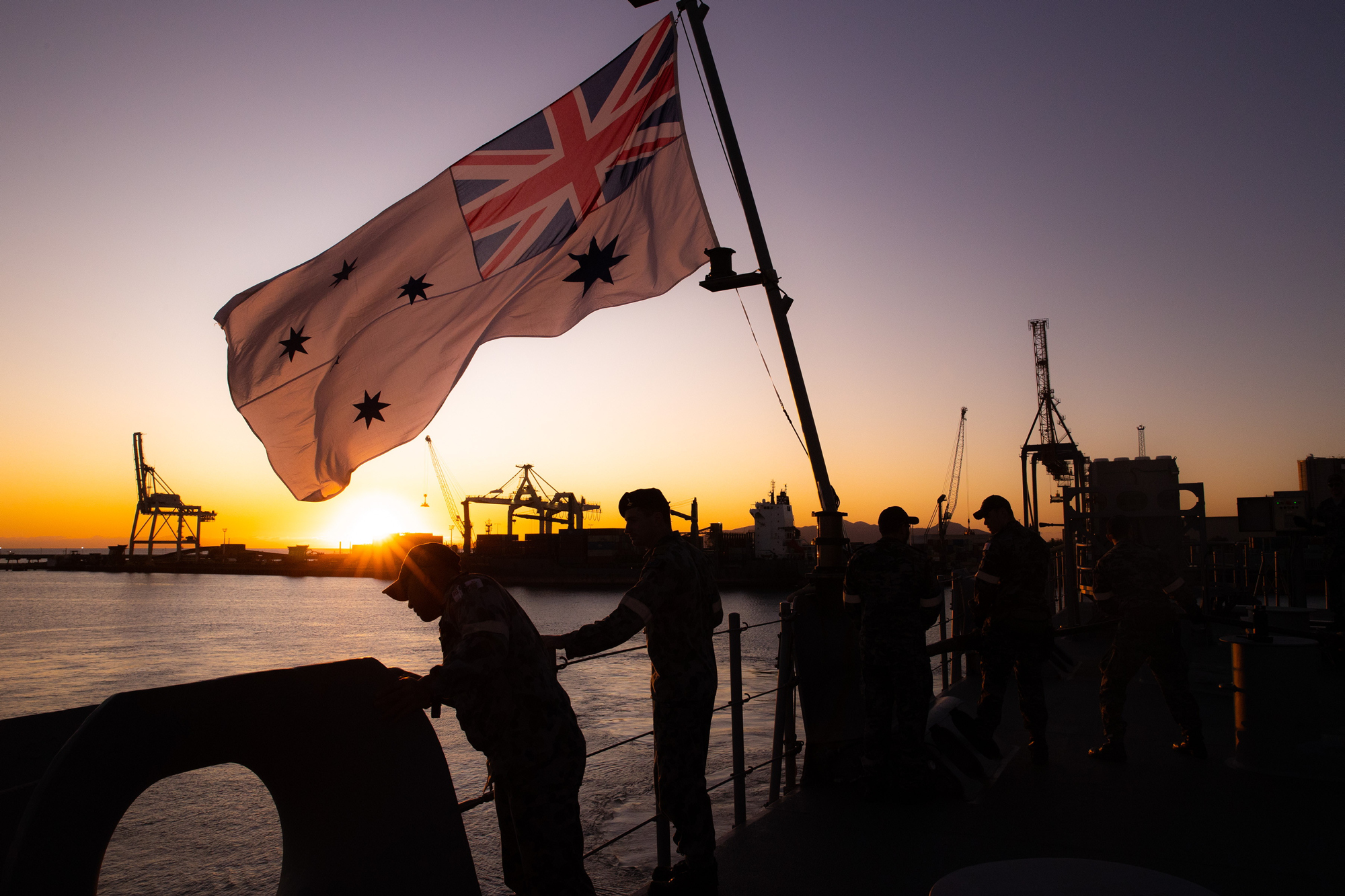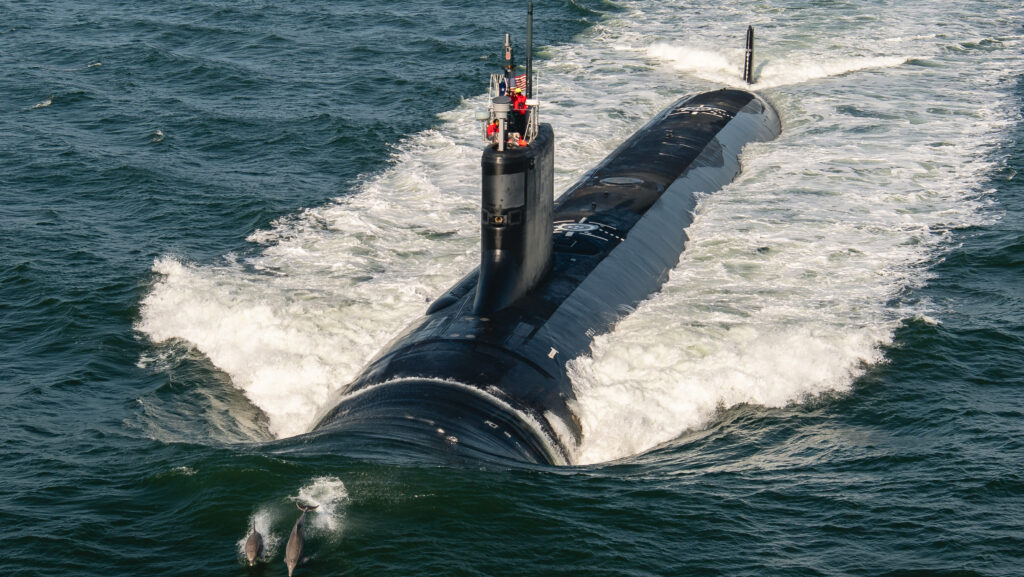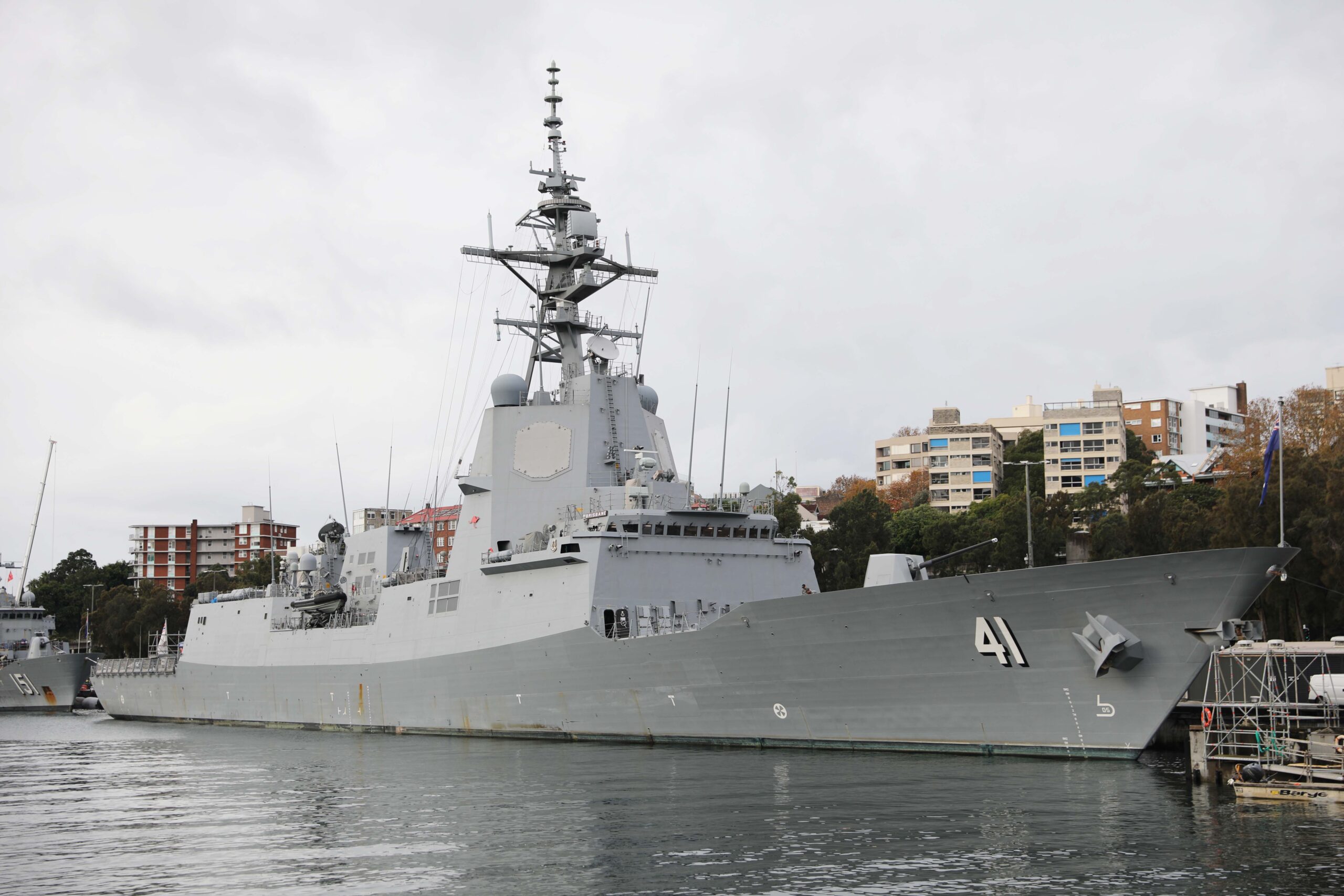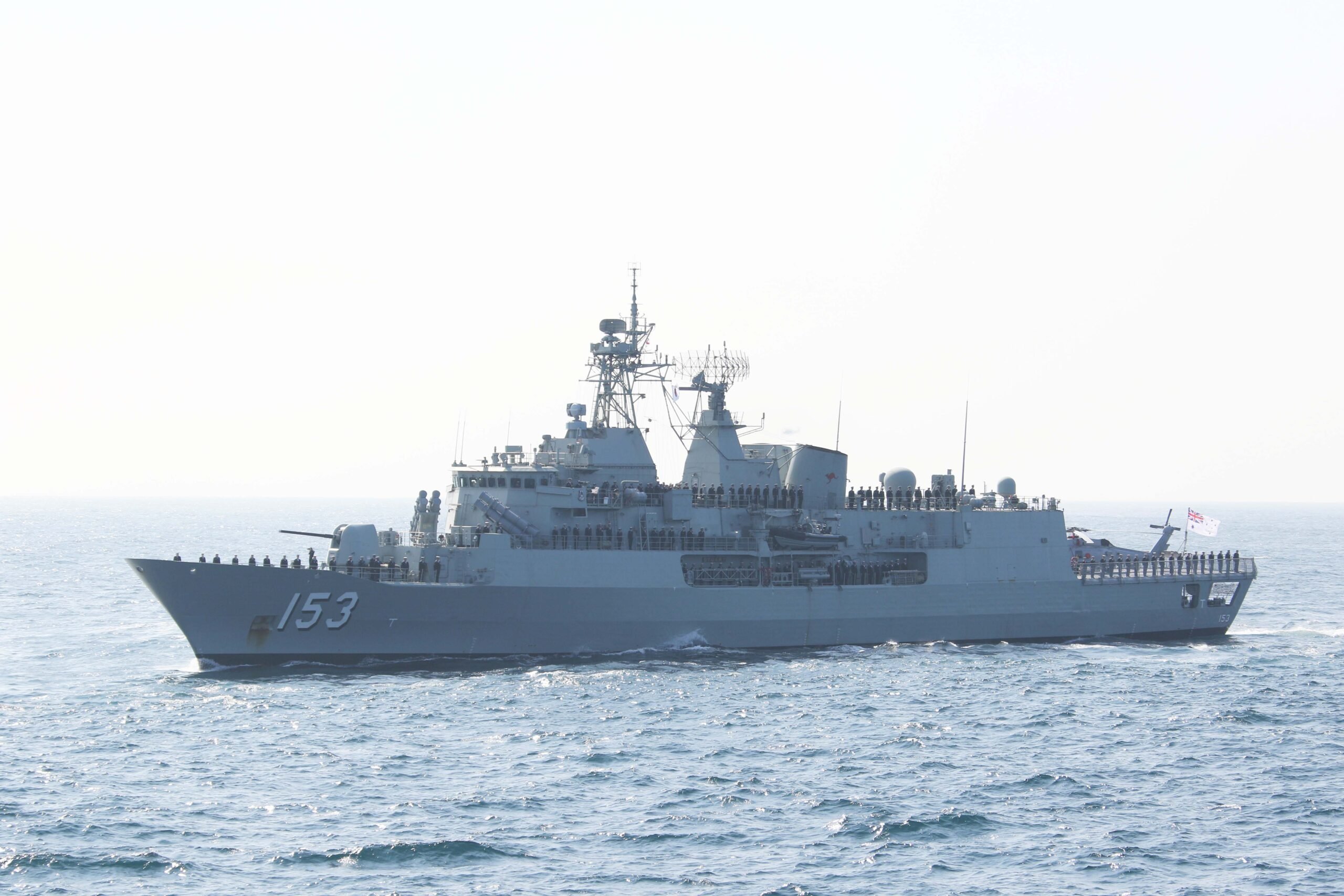
Last week, Australia revealed its federal budget for the 2024-25 fiscal year. The government allocated a record $36.8 billion to defense, up 6.3 percent compared to last year, with nuclear-powered submarines consuming a much enlarged portion of defense funding.
The Royal Australian Navy will receive $7.14 billion in FY 2024-25, which is slightly lower than the Australian Army’s $7.87 billion but still higher than the $6.34 billion destined for the Royal Australian Air Force. Of the navy’s allotment, some $2.27 billion will go to sustainment of assets.
Submarines

As efforts ramp up to induct a fleet of nuclear-powered submarines (SSN), RAN’s budget is correspondingly snowballing. Last year, Australia allocated $316.8 million to submarine aspirations, but in 2024-25 that figure has multiplied by a factor of nearly six to AU$1.49 billion for acquisition and $245.4 million for infrastructure/support.
The program, called “DEF 1” in the budget and still at least eight years away from seeing a Virginia-class boat delivered, will continue to suck up huge amounts of money, eventually reaching $3.31 billion in FY 2027-28.
To remind readers, this AUKUS program has three phases. The first will support increased visits and rotations of American and British SSNs to Australia, particularly at HMAS Stirling in the country’s west. Phase two will give Australia three ex-U.S. Navy Virginia-class submarines in the 2030s, and the third stage will deliver the AUKUS SSNs built at Osborne in South Australia from the 2040s.
The preparatory phase of the SSN program – both acquisition and support costs – has a budget of $9.06 billion over the next four years. A significant portion will be gifted to American and British shipbuilders as they prepare for construction. However, the budget conceals just how much cash will actually be transferred into the coffers of its AUKUS allies, other than to say it “includes a fair and proportionate contribution to our AUKUS partners’ submarine industrial bases to provide the additional capacity needed to deliver Australia’s conventionally armed, nuclear-powered submarines.”
The Australian Submarine Agency (ASA) was established on 1 July 2023 to deliver the SSN program. Overall, ASA’s operating costs will reach about AU$8 billion over the next four years, likely including the substantial sums promised to the United States and U.K. Government officials previously said GBP2.4 billion would be given to the UK and U.S. $3 billion to the United States to subsidize their submarine-building industries. ASA’s budget for the next four years includes AU$2.241 billion in FY2 025-26 and AU$2.751 billion in FY 2027-28, which may contain such payments. The budget in FY 2026-27 drops significantly to AU$881 million.
The budget also listed AU$330 million for salaries of 665 ASA staff in the year ahead. Agency staff numbers will peak in FY 2026-27.
Other naval programs

The Integrated Investment Program 2024 released on Apr. 17 promised to steer 38% of funds to maritime capabilities. Indeed, it indicated that AU$76 billion would go to undersea warfare (including SSNs) by 2034. Up to AU$69 billion will be spent on surface warships over the next decade, eventually giving the navy 26 surface warships.
Apart from the dominant SSN project, the 2024-25 budget named eight other naval projects in the list of its 30 largest acquisition programs.
The “Navy’s Enhanced Lethality Surface Combatant Fleet Review” issued in February cut the purchase of nine Hunter-class frigates down to six, and twelve Arafura-class offshore patrol vessels also down to six. The Hunter-class program will receive AU$813 million in the year ahead, while the OPVs will garner AU$587 million.
Regarding the antisubmarine warfare frigates, the budget stated, “During 2024-25 the project will continue to progress design and productionization activities including finalizing long-lead-time item contracts, progressing the zonal design program, finalizing the scope of the support system, and continuing construction of the six scheduled protection blocks.”
It added, “Subject to government approval, the project is planning to transition to the construction phase early in 2024-25. Transition to construction will result in the official commencement of construction of the first three ships.”
The RAN has refused to take delivery of the first two OPVs built by Luerssen Australia, as it battles the shipbuilder over paperwork issues. After ordering the OPVs, the navy decided it does not like the type, through no fault of Luerssen. Indeed, the surface combatant fleet review commented: “The OPV is an inefficient use of resources for civil maritime security operations and does not possess the survivability and self-defense systems to contribute to a surface combatant mission.” This program has been on the notorious Project of Concern list since last October.
The budget makes no reference to 11 new foreign-designed general-purpose frigates that are supposed to be selected next year under Project Sea 3000. The first three of which are to be built in overseas yards and the remainder in Australia. The government insisted a frigate design would be selected and a contract signed in 2025, but there is no corresponding budget yet.
Elsewhere, $348 million has been allocated for MH-60R Seahawk helicopters this year, as the fleet grows from 24 aircraft to 36. The first newcomers arrive in 2026, eventually giving the navy 14 flights – defined as a helicopter, crew and spares able to deploy aboard a ship – even though the RAN will soon have only nine major surface combatants.
Project Sea 1300 is providing maritime guided weapons and munitions such as long-range antiship missiles, extended-range surface-to-air missiles, advanced lightweight torpedoes, heavyweight torpedoes and advanced maritime land-strike capabilities and munitions. Some AU$708 million has been allocated in FY 2024-25.
Three Hobart-class destroyers will commence their $1.67 billion upgrades to Aegis Baseline 9 in 2026. As preparations begin, $388 million has been set aside for the coming year.
As it awaits new submarines, the RAN will give six Collins-class conventional submarines a life-of-type extension under Project Sea 1450. The total program will cost AU$1.045 billion, of which $160 million will be spent this year as it continues “to progress core design elements through to production readiness.”
Two final programs listed in the top-30 defense acquisitions are maritime electromagnetic maneuver warfare (Project Sea 5011) and maritime mining (Project Sea 2000). The former, worth $94.04 million, will give the RAN its next generation of maritime electronic warfare systems, with passive and active decoys scheduled for delivery in 2024-25. The latter program is supplying mines to enable sea denial and sea control operations. This year, mines from RWM Italia will cost Australia $90.71 million.
Personnel and shipbuilding industry

By the end of the new fiscal year, the Australian Department of Defence wants to have 63,597 uniformed personnel plus 19,127 civilians in its employ. However, the Australian Defence Force (ADF) currently has only 58,600 people in uniform—a shortfall of more than 5,000 personnel—and RAN manpower has gone backwards over the past three years. Individual services hope to grow by 1,300 in the navy, 2,300 in the army and 700 in the air force.
The budget document itself acknowledged the improbability of achieving this goal. “Defence is forecasting to be below the required ADF full-time workforce for 2024-25 due to high separation rates and lower than expected achievement of recruitment targets over recent years.”
To deliver all that is promised, Australia will need to ramp up its shipbuilding industry to ensure a continuous construction capacity. To this end, expenditure of $175.81 million is allocated this year, though this is well down on last year’s $290.1 million.
Capability deficit
While the government has promised increased defense spending, the real growth does not begin until 2027-28, when a budget of $44.95 billion is promised. By 2033-34, Canberra wants to reach annual defense spending of $66.7 billion, which would equate to 2.3 percent of gross domestic product.
The principal reason for Australia’s splurge on defense is its belated reaction to C hina’s rise and military modernization. Released in April, the “National Defence Strategy 2024” noted the “increasing strategic competition between the U.S. and China” as the latter seeks “to change the current regional balance in its favor,”
Jennifer Parker, an expert associate at the National Security College, Australian National University, warned that, despite promised increases in defense spending, there is “a significant gap in ADF capability over the next ten years. This gap coincides with the most strategically unstable geopolitical situation since World War II. This remains a large risk.”
Parker added, “I’m still gobsmacked that nobody is seriously asking questions about ADF structure. There are many ways to create capacity.” The RAN has already dropped plans to build two joint support ships, leaving just two replenishment ships to support the future enlarged fleet of 26 warships. Nor is there any plan to replace six Huon-class minehunters, the first of which will decommission on May 30.




